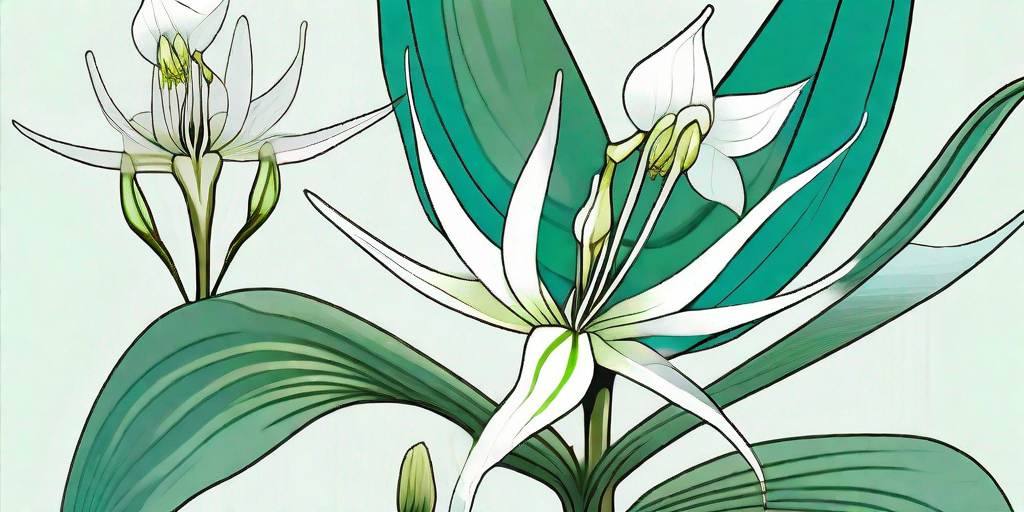
Egret Orchids, known scientifically as Habenaria radiata, are a sight to behold. These delicate, white flowers resemble a bird in flight, hence their name. But don't let their ethereal beauty fool you; these flowers are as tough as they come. They're like the Chuck Norris of the plant world. They can withstand harsh conditions and still look fabulous. Now, who wouldn't want such a plant in their garden?
Understanding the Egret Orchid
Native to East Asia, the Egret Orchid is a terrestrial orchid that thrives in grasslands and mountainous regions. They're like the mountain goats of the orchid world, always aiming for the top. They bloom in the summer, providing a stunning contrast to the greenery around them.
These orchids are perennial, meaning they'll stick around year after year, just like that one friend who always crashes on your couch. They grow from tubers, which are like little plant powerhouses, storing energy for the plant to use during growth and dormancy periods.
The Egret Orchid's Appearance
The Egret Orchid's flowers are its most striking feature. Each flower resembles a white bird in flight, with three long, feathery petals extending outwards. It's like each flower is doing a ballet performance, gracefully pirouetting on the stem.
The leaves of the Egret Orchid are long and slender, providing a beautiful green backdrop for the white flowers. They're like the supporting actors in a play, enhancing the beauty of the star.
How to Grow Egret Orchids
Now, let's get down to the nitty-gritty. Growing Egret Orchids may seem like a daunting task, but with the right care and attention, you'll have a garden full of these beauties in no time. It's like baking a cake; you just need the right ingredients and a bit of patience.
Firstly, you'll need to get your hands on some Egret Orchid tubers. These can be purchased from a reputable nursery or online. Just make sure they're healthy and disease-free, just like you'd check the expiry date on a carton of milk.
Planting the Tubers
Once you have your tubers, it's time to get planting. Egret Orchids prefer well-drained soil with a slightly acidic pH. They're a bit like Goldilocks, they like their soil conditions just right.
Plant the tubers about 2 inches deep and 4 inches apart. This gives them enough room to grow without crowding each other out. It's like giving each plant its own personal space bubble.
Caring for Your Egret Orchids
After planting, water the tubers thoroughly and then let the soil dry out before watering again. Egret Orchids don't like to have wet feet, much like you wouldn't enjoy walking around in soggy socks all day.
During the growing season, feed your Egret Orchids with a balanced orchid fertilizer. This will give them the nutrients they need to produce those stunning flowers. It's like giving them a multivitamin for optimal health.
Common Problems and Solutions
Like any plant, Egret Orchids can encounter a few problems. But don't worry, we've got the solutions. It's like having a plant doctor on speed dial.
Problem: Yellow Leaves
If your Egret Orchid's leaves are turning yellow, it could be a sign of overwatering. Remember, these plants don't like soggy conditions. Cut back on the watering and your plant should recover.
Problem: No Flowers
If your plant is not producing flowers, it could be due to a lack of nutrients. Try feeding it with a balanced orchid fertilizer. It's like giving your plant a hearty meal to boost its energy.
Frequently Asked Questions
- How often should I water my Egret Orchids?
Water your Egret Orchids when the top inch of soil feels dry. Overwatering can lead to root rot, which is as unpleasant as it sounds.
- Do Egret Orchids need a lot of sunlight?
Egret Orchids prefer indirect sunlight. Too much direct sunlight can scorch their leaves, much like a bad sunburn.
- Can I grow Egret Orchids indoors?
Yes, you can grow Egret Orchids indoors. Just make sure they get enough light and are not overwatered.
And there you have it, a comprehensive guide to growing and caring for Egret Orchids. With a bit of care and attention, you can have a garden full of these stunning flowers. So, why not give it a try? After all, who wouldn't want a garden full of ballet-dancing flowers?















